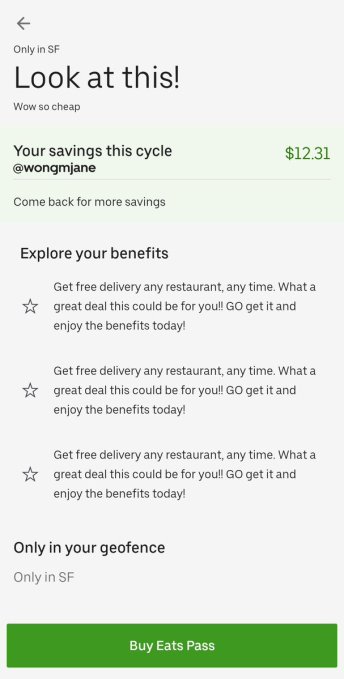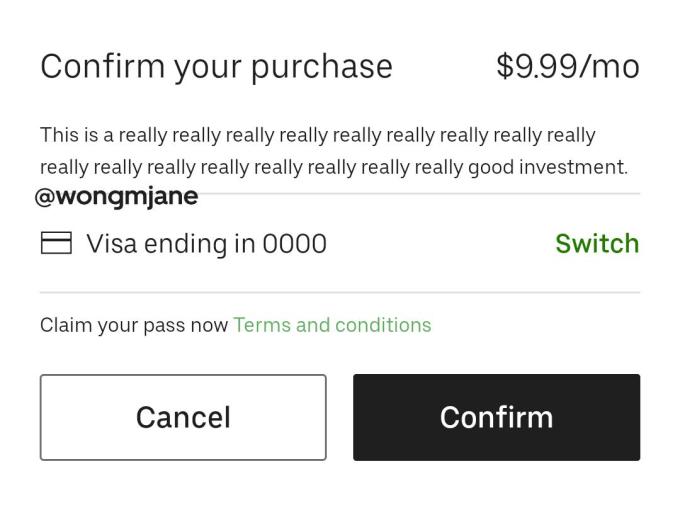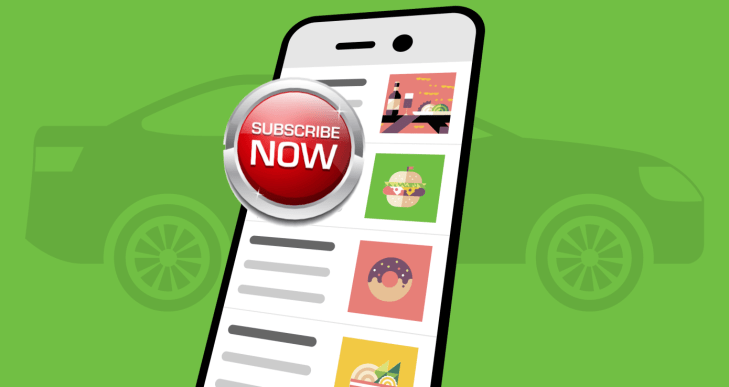What’s the cord-cutting equivalent to ditching your kitchen? Uber’s upcoming subscription to unlimited free food delivery. Uber is preparing to launch the $9.99 per month Uber Eats Pass, according to code hidden in Uber’s Android app.
 The subscription would waive Uber’s service fee that’s typically 15% of your order cost. Given that’s often $5 or more, users stand to save a lot if they order in frequently. But Uber could still earn money on menu item markups, cover costs with a flat order fee that protects against someone ordering a single taco, and, most importantly, build loyalty and scale at a time of intense food delivery competition.
The subscription would waive Uber’s service fee that’s typically 15% of your order cost. Given that’s often $5 or more, users stand to save a lot if they order in frequently. But Uber could still earn money on menu item markups, cover costs with a flat order fee that protects against someone ordering a single taco, and, most importantly, build loyalty and scale at a time of intense food delivery competition.
The Uber Eats Pass was first spotted by Jane Manchun Wong, the notorious reverse-engineering specialist who’s become a frequent TechCrunch tipster. She managed to generate screenshots from Uber’s Android app code that reveals a prototype of the feature. “Get free delivery, any restaurant, any time,” it says, showing the amount of money you could save or already saved.
An Uber spokesperson did not dispute the legitimacy of the findings and told TechCrunch, “We’re always thinking about new ways to enhance the Eats experience.” They declined to provide further details, which could hint that a launch is imminent but some details are still subject to change. For now we don’t know exactly which perks come with an Eats Pass or where it will be launching first.
At $9.99 per month, the Uber Eats Pass would cost the same and work similarly to Postmates Unlimited and DoorDash DashPass. If they all seem like good deals, you see why they’re less about immediate revenue and more about customer lock-in. You’re a lot less likely to order GrubHub or Caviar if you’ve already pre-paid to cover your Uber Eats delivery costs. And whichever apps emerge from this battle will have instituted the scale and steady behavior to raise prices or just enjoy large lifetime value from each subscriber.

Exploring new business opportunities could help perk up Uber’s share price, which closed at $41.50 today, two weeks after IPOing at an opening price of $42. There are fears that intense competition across both ridesharing and food delivery could make for an expensive road ahead for the newly public company. Any way it can gain an edge on its rivals’ users from straying to them is important. The logistics giant is already experimenting with allowing restaurants to offer discounts in exchange for promoted placement in the app, which is the first step to Uber becoming an ads company, where businesses pay for extra exposure.
If Uber combined Eats Pass with its car service subscription Ride Passes, you have the foundation for a sort of Uber Prime experience — one where you pay an upfront subscription fee that scores you perks and discounts but also makes you likely to spend a lot more on Uber. That bundle could be even more central to Uber than Amazon, which has few direct rivals in the west. People will need to eat and get around for the foreseeable future. Subsidizing loyalty now could be costly in the short-term, but poise Uber for years of lucrative business down the line.
